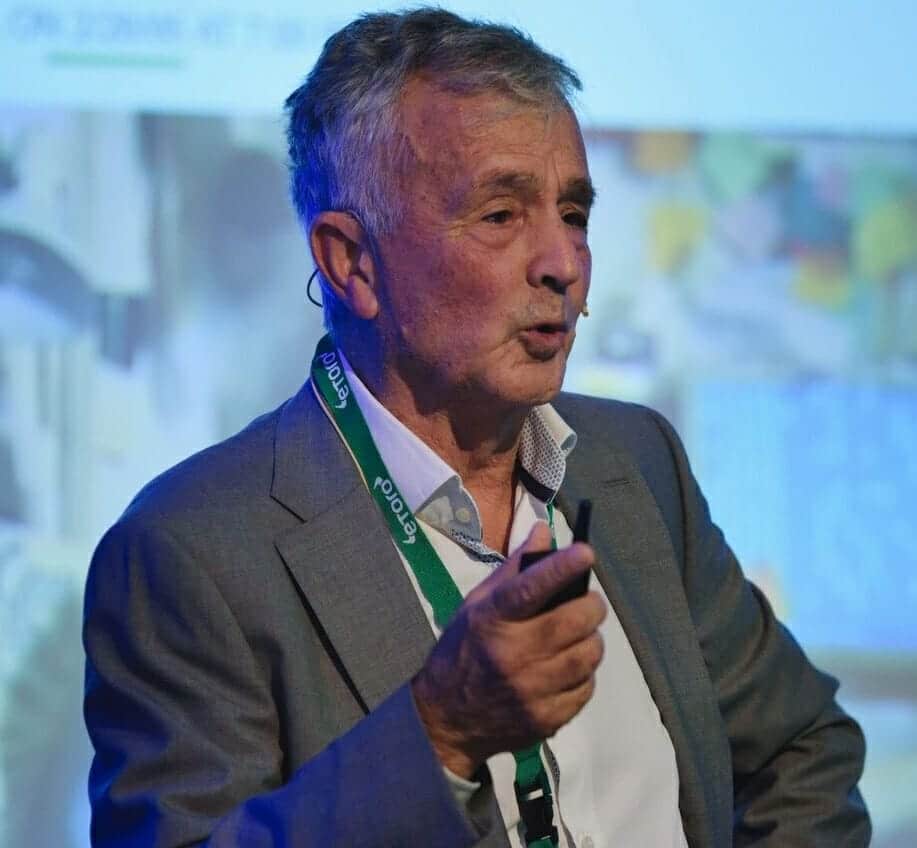Spyros Makridakis
University of Nicosia
IIF Founding Father and Fellow
How did it all begin (IIF/ISF and the JF/IJF)?
Towards the end of the 1970s, I was working at INSEAD France when the editor of Wiley UK visited me at the university. He knew about me from the book Forecasting Methods for Management which I had co-authored with Steve Wheelwright, that was published by his company. The book was selling extremely well for a field that did not exist at that time.
We had dinner in a nice little French restaurant, and from our discussion I understood that managers were eager to learn more about forecasting and apply it to their firms. That was the reason behind the success of our book whose major innovation was to integrate the various, diverse fields (statisticians, econometricians, or people, engineers, technological and judgemental forecasters) into a single book aimed at managers. He made me understand that Wiley would be interested in publishing more books on the subject and maybe even a journal devoted to the field. This was a positive message for a young assistant professor starting out in his career and looking for areas to concentrate his research and academic activities. This dinner was the spark that ignited both IIF and ISF as well as JF and IJF.
At that time there was not much publishing in what could be called the field of forecasting, but I could identify Scott Armstrong, Robert Carbone and Robert Fildes as potential partners to embark on founding the forecasting field. I contacted them by phone (there were no emails at the time) and, we agreed to meet in London to discuss how to proceed with our first decision which was to establish IIF. This was in 1979. As a result of that meeting, the first ISF conference was held in Quebec City in 1981 and was followed by the first issue of the Journal of Forecasting in 1982 with a paper written about the findings of the first M Competition. The rest is the continuation of history and can be found in my interview with Robert Fildes and Kostas Nikolopoulos published in the International Journal of Forecasting back in 2006.
What about your new Makridakis Open Forecasting Center (MOFC) at the University of Nicosia (UNIC)?
I am honored that UNIC and its CEO, Antonis Polemitis, have provided the fantastic opportunity to create the MOFC that will put into one entity all the forecasting activities I am involved with, including: M Competitions, M Conferences, M publications as well as the Applied Forecasting courses.
All information about the MOFC and its activities can be found on its website. The focus of the Center is to emphasize the commitment of UNIC to the field of forecasting and to provide the necessary resources and administrative support to achieve its objectives of advancing the field. I am very optimistic about its potential and benefits.
What about the latest M Competition, the M5?
The first three M Competitions were held locally, attracting a small number of participants who were mainly known to me and had been personally invited. The M4 was at a different level and magnitude. The number of the times series used jumped from 3,003 to 100,000 and participants from all over the world competed. The M5 is also at a different level. Most importantly, it will use Kaggle’ s platform with its 4 million members, and will be offering $100,000 prize money. It will run from 2 March to 30 June 2020. It is expected to attract more than 5,000 participants from around the world.
The M5 differs from the previous four competitions in four important ways, some of them suggested by the discussants of the M4 Competition.
- It uses hierarchical sales data, generously made available by Walmart, starting at the item level and aggregating to that of departments, product categories, stores in three geographical areas of the US: California, Texas, and Wisconsin
- Besides the time series data, it also includes explanatory variables such as price, promotions, day of the week, and special events (e.g. Super Bowl, Valentine’s Day, and Easter) that affect sales, which are used to improve forecasting accuracy.
- The distribution of uncertainty is assessed by asking participants to provide information on four indicative prediction intervals and the median.
The majority of the more than 42,000 time series display intermittency (sporadic sales including zeros) that present a new challenge from that of the previous four competitions.
What comes next in the field of forecasting?
The most important development is Deep Learning (DL) and the way it forecasts. DL will fundamentally affect the field as it can provide forecasts in a different way than the traditional statistical approach that requires specifying a specific model for each data series and estimating it separately each time. DL on the other hand uses an unstructured approach that determines the optimal model from the data itself, transferring the modelling process from the person to the computer. Eventually the two approaches will merge and probably hybrid models, as the winning approach of the M4 will emerge, combining the best of statistical and DL characteristics. It is my expectation that the M5 will encourage and prove the success of these types of hybrid models and open new avenues in forecasting and estimating the uncertainty in retail sales.


